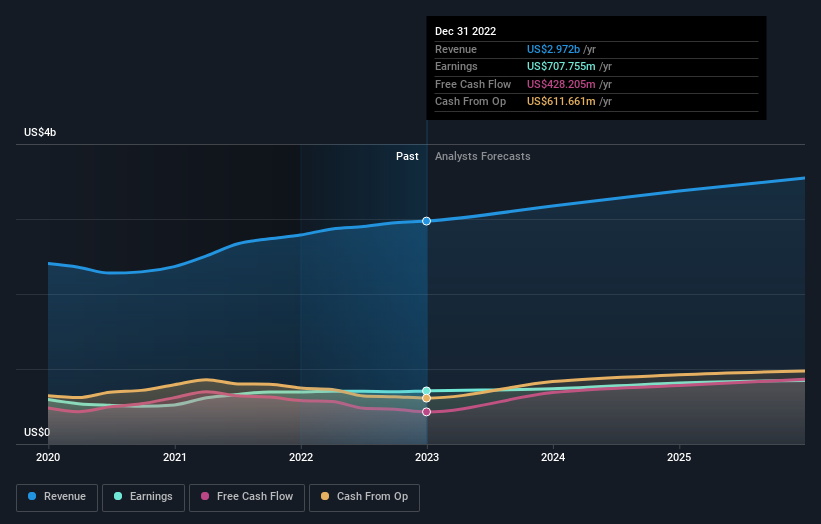
Let's talk about the popular Waters Corporation (NYSE:WAT). The company's shares maintained its current share price over the past couple of month on the NYSE, with a relatively tight range of US$320 to US$350. However, does this price actually reflect the true value of the large-cap? Or is it currently undervalued, providing us with the opportunity to buy? Let’s take a look at Waters’s outlook and value based on the most recent financial data to see if there are any catalysts for a price change.
View our latest analysis for Waters
Is Waters Still Cheap?
According to my valuation model, the stock is currently overvalued by about 26%, trading at US$320 compared to my intrinsic value of $254.63. This means that the opportunity to buy Waters at a good price has disappeared! In addition to this, it seems like Waters’s share price is quite stable, which could mean two things: firstly, it may take the share price a while to fall back down to an attractive buying range, and secondly, there may be less chances to buy low in the future once it reaches that value. This is because the stock is less volatile than the wider market given its low beta.
What kind of growth will Waters generate?

Investors looking for growth in their portfolio may want to consider the prospects of a company before buying its shares. Although value investors would argue that it’s the intrinsic value relative to the price that matter the most, a more compelling investment thesis would be high growth potential at a cheap price. With profit expected to grow by a double-digit 20% over the next couple of years, the outlook is positive for Waters. It looks like higher cash flow is on the cards for the stock, which should feed into a higher share valuation.
What This Means For You
Are you a shareholder? It seems like the market has well and truly priced in WAT’s positive outlook, with shares trading above its fair value. At this current price, shareholders may be asking a different question – should I sell? If you believe WAT should trade below its current price, selling high and buying it back up again when its price falls towards its real value can be profitable. But before you make this decision, take a look at whether its fundamentals have changed.
Are you a potential investor? If you’ve been keeping tabs on WAT for some time, now may not be the best time to enter into the stock. The price has surpassed its true value, which means there’s no upside from mispricing. However, the positive outlook is encouraging for WAT, which means it’s worth diving deeper into other factors in order to take advantage of the next price drop.
If you want to dive deeper into Waters, you'd also look into what risks it is currently facing. Every company has risks, and we've spotted 1 warning sign for Waters you should know about.
If you are no longer interested in Waters, you can use our free platform to see our list of over 50 other stocks with a high growth potential.
Valuation is complex, but we're here to simplify it.
Discover if Waters might be undervalued or overvalued with our detailed analysis, featuring fair value estimates, potential risks, dividends, insider trades, and its financial condition.
Access Free AnalysisHave feedback on this article? Concerned about the content? Get in touch with us directly. Alternatively, email editorial-team (at) simplywallst.com.
This article by Simply Wall St is general in nature. We provide commentary based on historical data and analyst forecasts only using an unbiased methodology and our articles are not intended to be financial advice. It does not constitute a recommendation to buy or sell any stock, and does not take account of your objectives, or your financial situation. We aim to bring you long-term focused analysis driven by fundamental data. Note that our analysis may not factor in the latest price-sensitive company announcements or qualitative material. Simply Wall St has no position in any stocks mentioned.
About NYSE:WAT
Waters
Provides analytical workflow solutions in Asia, the Americas, and Europe.
Adequate balance sheet with limited growth.


